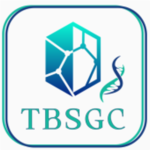The mycobacterial cell wall is a crucial structure targeted by antimicrobial agents, but its complexity hampers drug efficacy. Inhibiting cell wall components in combination therapy enhances permeability and is standard for diverse pathogens. Despite the potential, predicting the impact of inhibiting different targets remains uncertain, especially concerning drug-drug interactions. In a recent study, a systematic chemical-genetic interaction (CGI) analysis identified cell wall-related genes for synergistic effects with antibiotics in host-relevant conditions and infected mice. This revealed a novel strategy to overcome drug tolerance induced by cholesterol growth. The CGIs exhibited specificity, with some steps enhancing drug action and others proving antagonistic, often in a drug- or condition-specific manner. Building on these findings and leveraging resources within the TBSGC, we aim to identify and exploit novel cell wall-related targets. The goal is to engineer new chemical inhibitors that synergize with existing antibiotics, accelerating bacterial killing. This approach holds promise for advancing antimicrobial strategies and overcoming challenges associated with mycobacterial cell wall complexity.

Examples of metabolic vulnerabilities elucidated by the TBSGC.
(A) PEPCK (Rv0211) – critical for gluconeogenesis and carbon flux re-routing enzyme in complex with selective inhibitor.
(B) Central carbon metabolism scheme with the crucial enzymes marked.
(C) The malate synthase (GlcB), shown in complex with a chemical inhibitor that is efficacious in the infection mouse model (lanes: a. untreated, b. moxifloxacin treated, c-f. increasing doses of GlcB inhibitor) (PMID 23261599)
(D) The PrpR (Rv1129c) regulator is essential for the intracellular growth of Mtb (PMID: 22365605)
(E) Malate dehydrogenase (Mdh) is essential for survival in non-replicating conditions and during murine infection (PMID 30318462)
(F) Isocitrate dehydrogenase (Icd2) is required for growth in a mouse infection. Crystal structures and inhibitors were generated by the TBSGC. Metabolic pathways are related as shown in panel B.
Our specific aims in this project are :
In collaboration with the Chemigenomics Core, we mine large genetic datasets to identify target proteins that are essential and vulnerable to inhibition, and/or participate in novel biochemical processes. Many of these datasets and the analytical approaches to mine them have been generated by our consortium.
A combination of biochemical and whole cell screening is performed using focused libraries that include novel chemical matter.
High-resolution structures of protein/inhibitor/substrate complexes allow targeted medicinal chemistry to improve potency and pharmacokinetic features. Optimized inhibitors are leveraged in novel biochemical assays to probe enzymatic mechanism.

